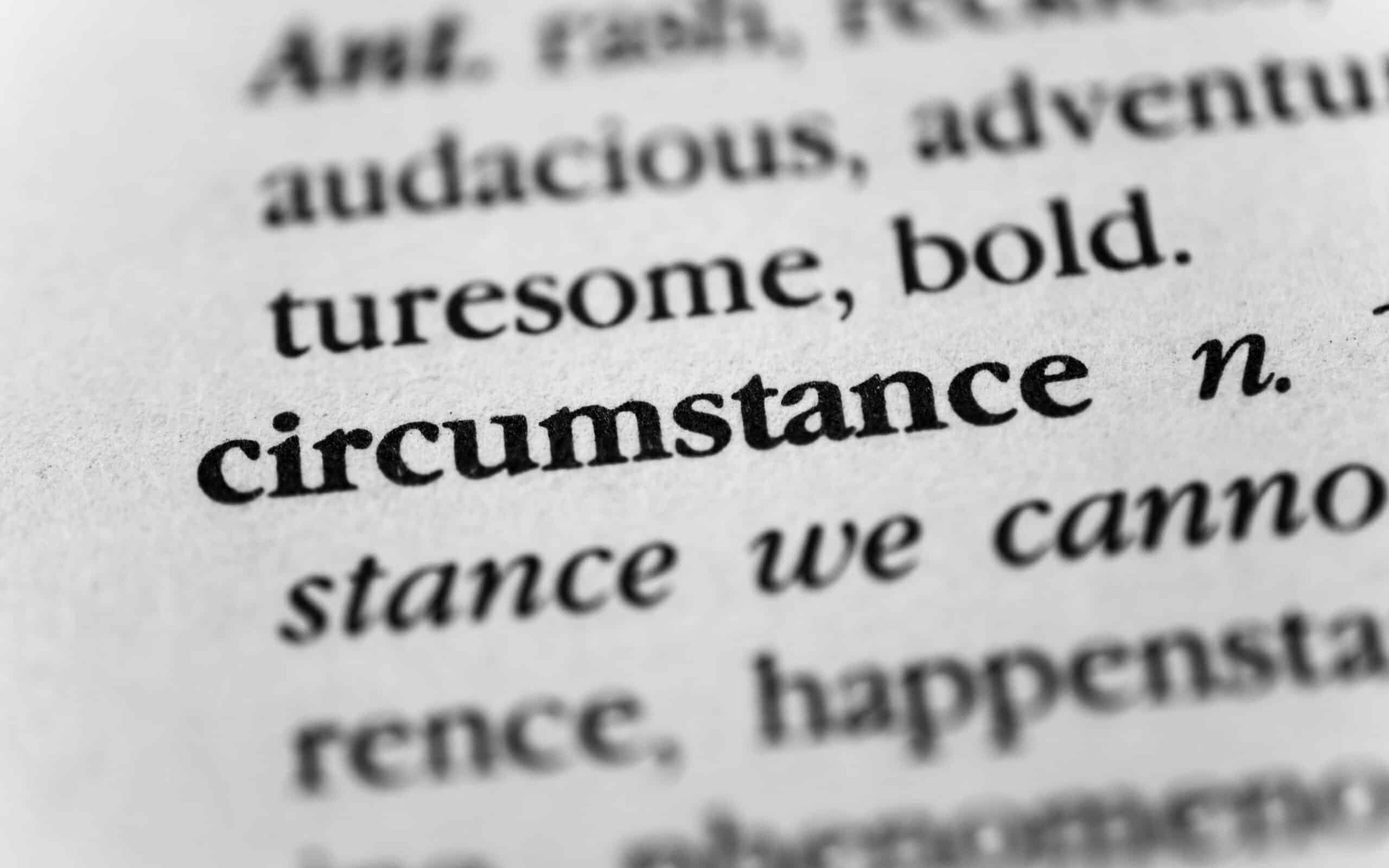
Probability is defined as how likely a particular event or outcome is. When there is an impactful workplace event, you will likely want to examine the probability of it occurring again, whether that event is positive or negative. In order to reasonably determine future probability, one must look at the circumstances surrounding the event.
Almost nothing happens in a bubble. Whether experiencing success or failure, looking at the circumstances that contributed to the outcome can help you put things in place to achieve the same result or avoid it.
Overview: What is circumstance?
Circumstance is the combined total of relevant events or facts that accompany, determine, or condition how probable or improbable an event is.
3 benefits and drawbacks of circumstance
There are a couple of benefits and a drawback to circumstance:
1. Benefit: Planning for success
If you are attempting to repeat a desired outcome, matching a set of circumstances that contributed to prior success can significantly increase its level of probability.
2. Benefit: Avoiding an outcome
If you are trying to avoid having the same outcome as before, altering a set of circumstances can decrease the probability that you will have the same result as before.
3. Drawback: Some circumstances cannot be altered
We only have control over so much. Some of the conditions present that lead to certain outcomes are beyond our control, so some circumstances cannot be altered.
Why is circumstance important to understand?
Circumstance is important to understand for the following reasons:
Control
By understanding circumstances, you can replicate a certain set of conditions to increase the probability of achieving a particular outcome.
Setting expectations
By having a clear comprehension of circumstances, you can plan accordingly for an outcome surrounding present conditions.
Making changes reasonable
By understanding circumstances, you can work around the conditions that you cannot change while altering or replicating those that you can. This way, you can make realistic predictions that are reasonable when compared to circumstances that you can control.
An industry example of circumstance
A toy company had an absolutely exceptional fourth quarter and is hoping to continue with the same level of success in the first quarter of the new business year. To accomplish this, the board of supervisors decides to look at all of the conditions that contributed to the quarter’s success. The goal of the team is to match as many of the circumstances present in the fourth quarter as possible so that the same outcome can be reached. Some contributing factors included the popularity of a new line of toys, a strong social media presence, and exemplary customer satisfaction. The team feels that it can continue matching these conditions to increase the probability of the same level of success. One circumstance that the team will not be able to match is that the fourth quarter is the holiday season, which is when toy sales are going to be at their highest.
3 best practices when thinking about circumstance
Here are some best practices for thinking about circumstance:
1. Don’t fret over what you cannot control
There is an old saying that you can’t squeeze blood from a turnip. Some things are simply out of our control. You need to be mindful of the uncontrollable conditions when making your plans. Though some conditions might be uncontrollable, you can include them in the plans you make, so that you are prepared and achieve a desirable outcome.
2. Be aware of all circumstances
Whether you have a successful or undesirable outcome, it is important to know how you got there. Consult all relevant parties of a project so that you are aware of any and all circumstances surrounding an event. That way, you can plan accordingly for the next one.
3. What is the equation for basic probability?
Using E as a variable, you can calculate basic probability using the following formula:
P(E) = Number of outcomes that correspond to the event / Total of likely outcomes
Frequently Asked Questions (FAQ) about circumstance
What is a special circumstance?
A special circumstance is an exceptional situation that is outside of one’s control and has had an adverse impact.
What is the difference between circumstances and conditions?
Circumstances typically refer to the facts surrounding an event, while conditions refer to the quality or amount of something.
What is the relationship between a situation and a circumstance?
A situation is a set of circumstances.
Circumstances and probability
In business, when we have a successful outcome, we look toward being able to align circumstances in such a way as to increase the probability of future success. When we have an undesirable outcome, we look to avoid the circumstances that contributed to it. As much as we would like to, we cannot control all circumstances. We can control some, and we must plan to work with or around others.